Rijksmuseum, Amsterdam

Adoration of the Shepherds, detail, Pieter Aertsen
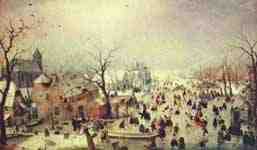
Winter landscape, Hendrick Avercamp
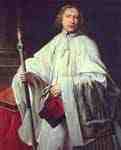
Portrait of Jacobus Govaerts, Philippe de Champaigne

Landscape with Rocky Cliffs and a Waterfall, Gustave Courbet
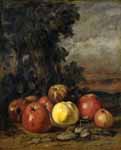
Apples, Gustave Courbet
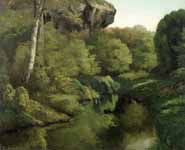
View of the Forest of Fontainebleau, Gustave Courbet
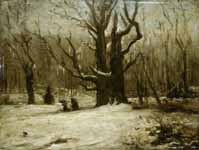
Winter landscape, Gustave Courbet

The disbanding of the Waardgelders by Prince Maurits on the Neude at Utrecht, Joost Cornelisz. Droochsloot
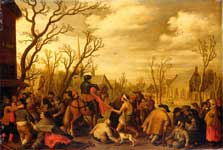
St. Martin cutting a piece of his coat to give to a beggar, Joost Cornelisz. Droochsloot

Paulus heals the Cripple in Lystra, Karel Dujardin
 Portrait of William of Orange with his future bride, Anthony van Dyck
Portrait of William of Orange with his future bride, Anthony van Dyck
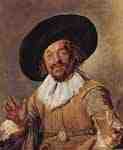
The Merry Drinker, Frans Hals

The Company of Reynier Real, Frans Hals
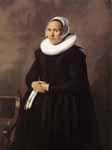
Feyntje van Steenkiste, Frans Hals
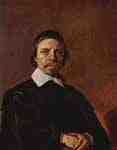 Portrait of a man with a skullcap, Frans Hals
Portrait of a man with a skullcap, Frans Hals

Nicolaes Hasselaer, Frans Hals
 Portrait of Anna Codde, Maerten van Heemskerck
Portrait of Anna Codde, Maerten van Heemskerck
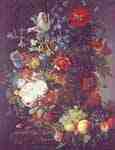
Flowers and fruits, Jan van Huysum
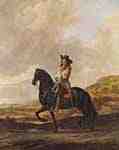
Portrait of Pieter Schout on horseback, Thomas de Keyser
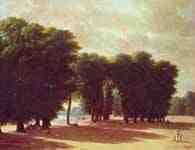
Overlooking the park of Saint-Cloud, Pieter Rudolph Kleyn

Diana and Endymion, Gerard de Lairesse
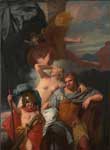
Mercury Ordering Calypso to Release Odysseus , Gérard de Lairesse
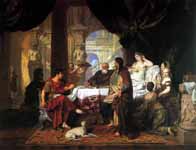
Cleopatra's Banquet, Gerard de Lairesse
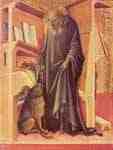
St. Jerome, Lorenzo Monaco
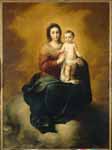
Madonna and Child, Bartolomé Esteban Murillo
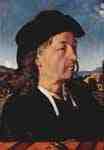
Portrait of Giuliano da Sangallo, Piero di Cosimo
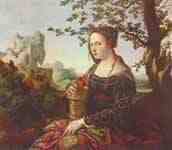
Mary Magdalene, Jan van Scorel
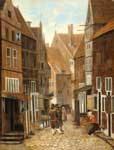
Cityscape, Jacob Vrel
The Rijksmuseum (Dutch pronunciation: [ˈrɛi̯ksmyˌzeːjʏm]; English: State Museum) is a Netherlands national museum dedicated to arts and history in Amsterdam. The museum is located at the Museum Square in the borough Amsterdam South, close to the Van Gogh Museum, the Stedelijk Museum Amsterdam, and the Concertgebouw.[8]
The Rijksmuseum was founded in The Hague in 1800 and moved to Amsterdam in 1808, where it was first located in the Royal Palace and later in the Trippenhuis.[1] The current main building was designed by Pierre Cuypers and first opened its doors in 1885.[3] On 13 April 2013, after a ten-year renovation which cost € 375 million, the main building was reopened by Queen Beatrix.[9][10][11] In 2013 and 2014, it was the most visited museum in the Netherlands with record numbers of 2.2 million and 2.45 million visitors.[12][4]
The museum has on display 8,000 objects of art and history, from their total collection of 1 million objects from the years 1200–2000, among which are some masterpieces by Rembrandt, Frans Hals, and Johannes Vermeer. The museum also has a small Asian collection which is on display in the Asian pavilion.[3]
History
18th century
Isaac Gogel (1765–1821)
In 1795, the Batavian Republic was proclaimed. The Minister of Finance Isaac Gogel argued that a national museum, following the French example of The Louvre, would serve the national interest. On 19 November 1798, the government decided to found the museum.[1][13]
On 31 May 1800, the National Art Gallery (Dutch: Nationale Kunst-Galerij), precursor of the Rijksmuseum, opened its doors in Huis ten Bosch in The Hague. The museum exhibited around 200 paintings and historic objects from the collections of the Dutch stadtholders.[1][13]
19th century
In 1805, the National Art Gallery moved within The Hague to the Buitenhof.[1]
In 1806, the Kingdom of Holland was established by Napoleon Bonaparte. On the orders of king Louis Bonaparte, brother of Napoleon, the museum moved to Amsterdam in 1808. The paintings owned by that city, such as The Night Watch by Rembrandt, became part of the collection. In 1809, the museum opened its doors in the Royal Palace in Amsterdam.[1]
In 1817, the museum moved to the Trippenhuis. The Trippenhuis turned out to be unsuitable as a museum. In 1820, the historical objects were moved to the Mauritshuis in The Hague, and in 1838 the 19th-century paintings were moved to Paviljoen Welgelegen in Haarlem.[1]
In 1863, there was a design contest for a new building for the Rijksmuseum, but none of the submissions was considered to be of sufficient quality. Pierre Cuypers also participated in the contest and his submission reached the second place.[14]
In 1876 a new contest was held and this time Pierre Cuypers won. The design was a combination of gothic and renaissance elements. The construction began on 1 October 1876. On both the inside and the outside, the building was richly decorated with references to Dutch art history. Another contest was held for these decorations. The winners were B. van Hove and J.F. Vermeylen for the sculptures, G. Sturm for the tile tableaus and painting and W.F. Dixon for the stained glass. The museum was opened at its new location on 13 July 1885.[14]
In 1890 a new building was added a short distance to the south-west of the Rijksmuseum. As the building was made out of fragments of demolished buildings, that together give an overview of the history of Dutch architecture, it has come to be known informally as the 'fragment building'. It is also known as the 'south wing', and is currently (in 2013) branded the Philips Wing.
20th century
File:Afscheid van Neerlands kunstschatbewaarder Weeknummer 59-49 - Open Beelden - 31178.ogvPlay media
Dutch newsreel from 1959
In 1906 the hall for the Night Watch was rebuilt.[14] In the interior more changes were made, between the 1920s and 1950s most multi-coloured wall decorations were painted over. In the 1960s exposition rooms and several floors were built into the two courtyards. The building had some minor renovations and restorations in 1984, 1995–1996 and 2000.[15]
A renovation of the south wing of the museum, also known as the 'fragment building' or 'Philips Wing', was completed in 1996, the same year that the museum held its first major photography exhibition featuring its extensive collection of 19th-century photos.[16]
21st century
The atrium after the renovation in 2013
In December 2003, the main building of the museum closed for a major renovation. During this renovation, about 400 objects from the collection were on display in the 'fragment building', including Rembrandt's The Night Watch and other 17th-century masterpieces.[17]
The restoration and renovation of the Rijksmuseum are based on a design by Spanish architects Antonio Cruz and Antonio Ortiz. Many of the old interior decorations were restored and the floors in the courtyards were removed. The renovation would have initially taken five years, but was delayed and eventually took almost ten years to complete. The renovation cost € 375 million.[10]
The reconstruction of the building was completed on 16 July 2012. In March 2013 the museum's main pieces of art were moved back from the 'fragment building' (Philips Wing) to the main building. The Night Watch returned to the Night Watch Room, at the end of the Hall of Fame. On 13 April 2013, the main building was reopened by Queen Beatrix.[9] On 1 November 2014 the Philips Wing reopened with the exhibition Modern Times: Photography in the 20th Century.
List of directors
Queen Beatrix and museum director Wim Pijbes in 2013
Cornelis Sebille Roos[1]
Cornelis Apostool (1808–1844)[1]
Jan Willem Pieneman (1844–1847)[18]
Frederik Daniël Otto Obreen (1883–1896)[19]
Barthold Willem Floris van Riemsdijk (1897–1921)[20]
Frederik Schmidt-Degener (1921–1941)[21]
David Röell (1945–1959)[22]
Arthur van Schendel (1959–1975)[23]
Simon Levie (1975–1989)[23]
Henk van Os (1989–1996)[24]
Ronald de Leeuw (1996–2008)[25]
Wim Pijbes (2008–present)[26]
Building
The building of the Rijksmuseum was designed by Pierre Cuypers and opened in 1885. It consists of two squares with an atrium in each centre. In the central axis is a tunnel with the entrances at ground level and the Gallery of Honour at the first floor. The building also contains a library. The fragment building, branded Philips wing, contains building fragments that show the history of architecture in the Netherlands. The Rijksmuseum is a rijksmonument (national heritage site) since 1970[27] and was listed in the Top 100 Dutch heritage sites in 1990. The Asian pavilion was designed by Cruz y Ortiz and opened in 2013.
According to Muriel Huisman, Project Architect for the Rijksmuseum's renovation, "Cruz y Ortiz always like to look for a synergy between old and new, and we try not to explain things with our architecture.” With the Rijks, “there’s no cut between old and new; we’ve tried to merge it. We did this by looking for materials that were true to the original building, resulting in a kind of silent architecture."[28]
Collection
See also: 120 Paintings from the Rijksmuseum and List of painters in the collection of the Rijksmuseum
The collection of the Rijksmuseum consists of 1 million objects and is dedicated to arts, crafts, and history from the years 1200 to 2000. Around 8000 objects are currently on display in the museum.[3]
The collection contains more than 2,000 paintings from the Dutch Golden Age by notable painters such as Jacob Isaakszoon van Ruisdael, Frans Hals, Johannes Vermeer, Jan Steen, Rembrandt, and Rembrandt's pupils.[3]
The museum also has a small Asian collection which is on display in the Asian pavilion.[3]
It also displays the stern of HMS Royal Charles which was captured in the Raid on the Medway, and the Hartog plate.
In 2012[29] the museum took the unusual step of making some 125,000 high-resolution images available for download via its Rijksstudio webplatform,[30] with plans to add another 40,000 images per year until the entire collection of one million works is available, according to Taco Dibbits, director of collections.[31][32]
Visitors
year visitors year visitors
1995 942,000[33] 2005 842,586[34]
1996 1,275,000[35] 2006 1,142,182[36]
1997 1,084,652[37] 2007 969,561[36]
1998 1,229,445[38] 2008 975,977[36]
1999 1,310,497[38] 2009 876,453[36]
2000 1,146,438[39] 2010 896,393[36]
2001 1,015,561[39] 2011 1,010,402[36][a]
2002 1,100,488[40] 2012 965,000 (est.)[41]
2003 833,450[40][b] 2013 2,200,000 (est.)[12]
2004 812,102[34] 2014 2,450,000 (est.)[4]
The 20th-century visitor record of 1,412,000 was reached in the year 1975.[42]
In the 1990s and early 2000s the Rijksmuseum was annually visited by 0.9 to 1.3 million people. On 7 December 2003, the main building of the museum was closed for a renovation until 13 April 2013. In the following decade, the number of visitors slightly decreased to 0.8 to 1.1 million people. The museum says after the renovation, the museum's capacity is 1.5 to 2.0 million visitors annually.[3] Within eight months since the reopening in 2013, the museum was visited by 2 million people.[43]
The museum was had 2.2 million visitors in 2013 and an all time visitor record of 2.45 million in 2014.[4][12][34][36][39][40][41] The museum was the most visited museum in the Netherlands and the 19th most visited art museum in the world in 2013 and 2014.[12][44][5][6]
Library
The Rijksmuseum Research Library is part of the Rijksmuseum, and is the best and the largest public art history research library in The Netherlands.
Notes
This includes the 16,777 visitors to the main building.
The main building was closed from 7 December 2003.
References
History of the Rijksmuseum, Rijksmuseum. Retrieved 4 April 2013.
Address and route, Rijksmuseum. Retrieved 4 April 2013.
The renovation, Rijksmuseum. Retrieved on 4 April 2013.
(Dutch) |Recordaantal van bijna 2,5 miljoen bezoekers naar Rijksmuseum", Trouw, 2014. Retrieved on 30 December 2014.
(Dutch) Claudia Kammer & Daan van Lent, "Musea trokken dit jaar opnieuw meer bezoekers", NRC Handelsblad, 2014. Retrieved on 18 July 2015.
Top 100 Art Museum Attendance, The Art Newspaper, 2015. Retrieved on 18 July 2015.
Board of Directors, Rijksmuseum. Retrieved 4 April 2013.
Museumplein, I Amsterdam. Retrieved 4 April 2013.
"Rijksmuseum set for grand reopening in Amsterdam". BBC News. 4 April 2013. Retrieved 4 April 2013.
"The Rijksmuseum reopens: A new golden age". The Economist (London). 13 April 2013. Retrieved 14 April 2013.
"The Dutch Prize Their Pedal Power, but a Sea of Bikes Swamps Their Capital". The New York Times. 20 June 2013.
(Dutch) Daan van Lent & Pieter van Os "Musea doen het goed: aantal bezoekers in 2013 fors gestegen", NRC Handelsblad, 2013. Retrieved on 2 January 2014.
(Dutch) Roelof van Gelder, Schatkamer met veel gezichten, 2000. Retrieved 15 April 2013.
"Stadhouderskade 42. Rijksmuseum (1876/85)". Monumenten en Archeologie in Amsterdam (in Dutch). City of Amsterdam. Archived from the original on 9 February 2007. Retrieved 1 April 2007.
"Stadhouderskade 42. Rijksmuseum (1876/85). Interieur". Monumenten en Archeologie in Amsterdam (in Dutch). City of Amsterdam. Archived from the original on 2 February 2007. Retrieved 1 April 2007.
A new art: photography in the 19th century. The photo collection of the Rijksmuseum, Amsterdam, edited by curators Mattie Boom and Hans Rooseboom, preface by Peter Schatborn and Ronald de Leeuw, essays by Jan Piet Filedt Kok, Mattie Boom, Hans Rosenboom, Robbert van Venetie, Hedi Hegeman, Andreas Blühm, Saskia Asser and Annet Zondervan, Rijksmuseum & Van Gogh Museum, 1996, ISBN 9053491937
"Final Design The New Rijksmuseum". The New Rijksmuseum. Rijksmuseum Amsterdam. Retrieved 1 April 2007.
Jan Willem Pieneman, Rijksmuseum. Retrieved 2 May 2013.
(Dutch) Frederik Daniël Otto Obreen (1840-96), Rijksmuseum. Retrieved 2 May 2013.
(Dutch) Jonkheer Barthold Willem Floris van Riemsdijk (1850-1942), Geheugen van Nederland. Retrieved 25 April 2013.
(Dutch) A.A.M. de Jong, Schmidt Degener, Frederik (1881-1941), Historici.nl, 2012. Retrieved 25 April 2013.
(Dutch) Th.J. Meijer, Röell, jhr. David Cornelis (1894-1961), Historici.nl, 2012. Retrieved 25 April 2013.
(Dutch) Lucette ter Borg, "Gedonderjaag in het Rijksmuseum", de Volkskrant, 2000. Retrieved 25 April 2013.
http://www.globalartmuseum.de/site/person/58
"CV Prof. Dr. (h. c.) Ronald de Leeuw" (PDf). Kunsthistorisches Museum. Retrieved 25 April 2013.
Charlotte Higgins (5 April 2013)."Rijksmuseum to reopen after dazzling refurbishment and rethink". The Guardian (London). Retrieved 25 April 2013.
(Dutch) Monumentnummer: 5680, Rijksdienst voor het Cultureel Erfgoed. Retrieved on 6 March 2014.
http://www.archdaily.com/496461/rijksmuseum-revisited-the-dutch-national-museum-one-year-on/
"Rijksmuseum lanceert Rijksstudio". Creative Commons Nederland (in Dutch). Retrieved 30 July 2015.
Rijkstudio promotes and enables the reuse of the Rijksmuseum collection.
Nina Siegal (28 May 2013). "Masterworks for One and All". The New York Times. Retrieved 28 May 2013.
Erik Boekesteijn (12 April 2013). TWIL #94: Peter Gorgels (Internet Manager Rijksmuseum) (Video podcast). This Week In Libraries. Amsterdam: Shanachiemedia. Retrieved 11 June 2013.
http://www.trouw.nl/tr/nl/5009/Archief/archief/article/detail/2728791/1996/01/04/Grote-musea-trokken-in-1995-minder-bezoekers.dhtml
(Dutch) Jaarverslag 2005, Rijksmuseum, 2006. Retrieved 25 April 2013.
(Dutch) Rijksmuseum en Kunsthal trekken veel bezoekers, de Volkskrant, 1997. Retrieved 25 April 2013.
(Dutch) Jaarverslag 2011, Rijksmuseum, 2012. Retrieved on 25 April 2013.
(Dutch) Jaarverslag 1998, Rijksmuseum, 1999. Retrieved 25 April 2013.
(Dutch) Jaarverslag 1999, Rijksmuseum, 2000. Retrieved 25 April 2013.
(Dutch) Jaarverslag 2001, Rijksmuseum, 2002. Retrieved 25 April 2013.
(Dutch) Jaarverslag 2003, Rijksmuseum, 2004. Retrieved 25 April 2013.
(Dutch) Top 55 Museumbezoek 2012, Nederlandse Museumvereniging. Retrieved 4 April 2013.
(Dutch) Openingsjaar Rijksmuseum breek alle records, Rijksmuseum, 2013. Retrieved on 2013-12-27.
Rijksmuseum welcomes two millionth visitor (press release), Rijksmuseum, 2013. Retrieved 27 December 2013.
Top 100 Art Museum Attendance, The Art Newspaper, 2014. Retrieved on 28 June 2014.
---
Fine Art Prints | Greeting Cards | Phone Cases | Lifestyle | Face Masks | Men's , Women' Apparel | Home Decor | jigsaw puzzles | Notebooks | Tapestries | ...
---
Artist
A - B - C - D - E - F - G - H - I - J - K - L - M -
N - O - P - Q - R - S - T - U - V - W - X - Y - Z
Retrieved from "http://en.wikipedia.org/"
All text is available under the terms of the GNU Free Documentation License


